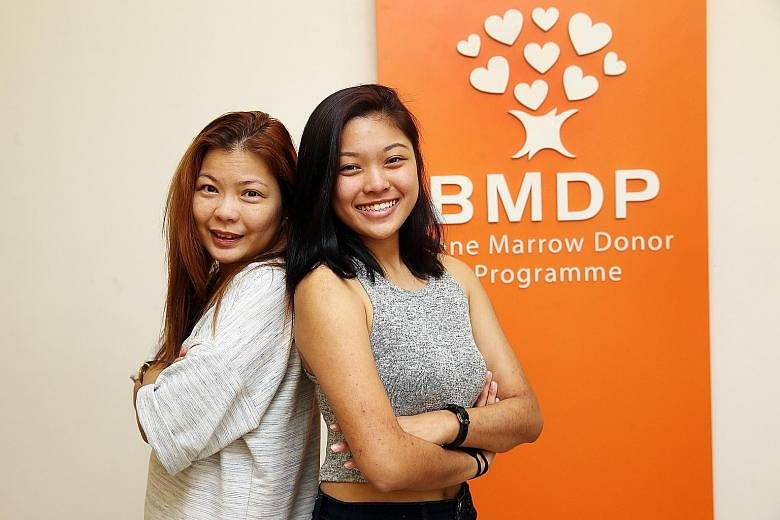Shermaine Low was 10 years old when she learnt about acute lymphoblastic leukaemia, a type of cancer that affects the bone marrow.
Her mother, Madam Stacey Lim, had been diagnosed with it and was given three to six months to live.
But Madam Lim's recovery after a bone marrow transplant inspired the student to sign up with the Bone Marrow Donor Programme (BMDP) in March, as soon as she reached the minimum age of 17.
"We didn't even discuss it and I got to know of her intentions last year," said Madam Lim, a mother of two and now 42, who is proud that her daughter signed up of her own accord after learning about the programme. "I want (my children) to be willing donors, but not just because I had benefited from it."
The number of donors on the national register aged below 25 has almost doubled, from 2,667 in 2013 to 5,144 last year .
Shermaine, now 17, said she and her schoolmates signed up at the BMDP's recruitment drive at her school, by doing a cheek swab for their DNA. She said:"(My mother's donor) impacted my life and I want to impact somebody else's life in the same way."
BMDP chief executive Jane Prior believes young people are better informed about bone marrow donation and less easily influenced by misconceptions - such as thinking that it has to involve surgery.
Those who have donated, such as civil servant Mei Fang, 27, liken it to blood donation or dialysis.
The procedure she went through included injections to stimulate the growth of blood stem cells in the marrow and mobilise them into the blood stream. She was then hooked up to a machine to extract the cells.
She was identified as a match for a patient within a year of signing up in early 2015. "It was much simpler than I thought it would be," she said.
The BMDP, which is linked to a global database, has been focusing on schools since 2013.
"The younger a donor is when they sign up, it means they will be available for a longer time as the cut-off age is 60," said Ms Prior.
Having more local donors reduces the cost and time needed from the search to transplant. A transplant from a local donor costs about $22,000 but one from a US-sourced donor can cost as much as $65,000.
Out of 56 transplants last year, 16 were from local donors - up from two in 2012. Calling this a "significant step forward" for the registry, Ms Prior said the goal is to find local donors for all patients. Last month, the BMDP announced a target of recruiting 50,000 more donors - growing its registry by more than 80 per cent - in the next three years. It also hopes to boost the number of non-Chinese donors, as there is a higher chance of finding a match within the same ethnic group. The chance of a patient finding a match is one in 20,000.


